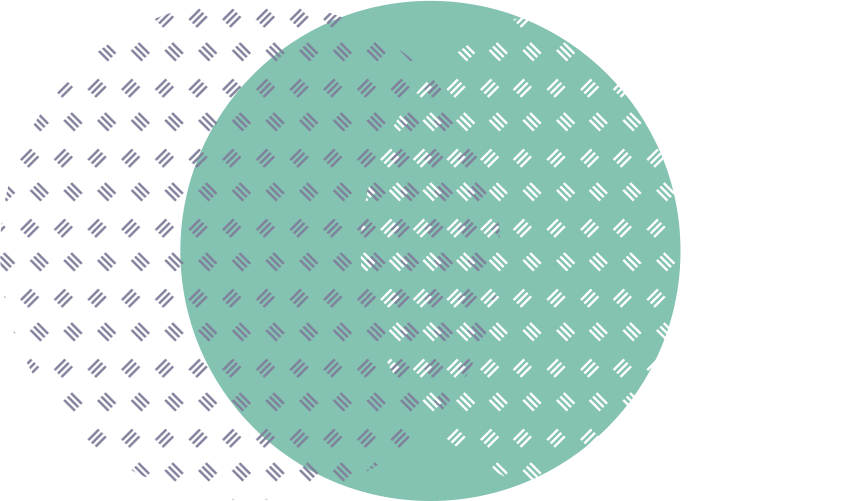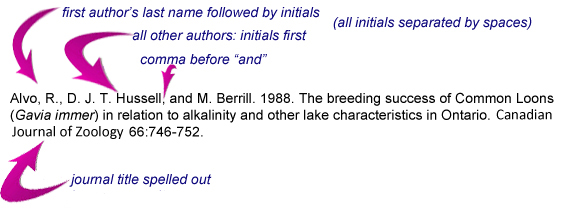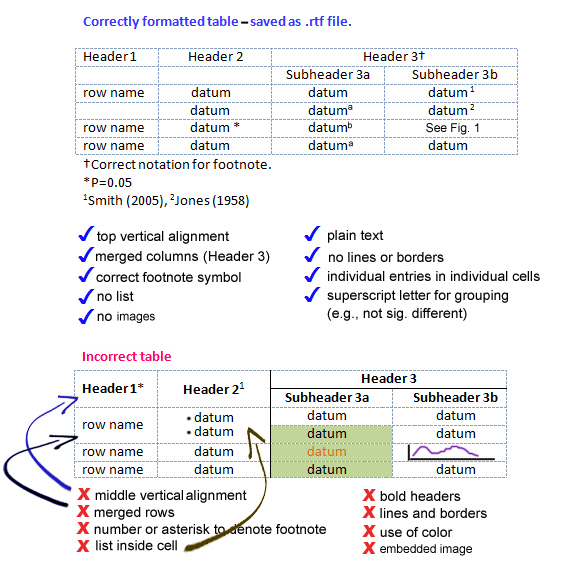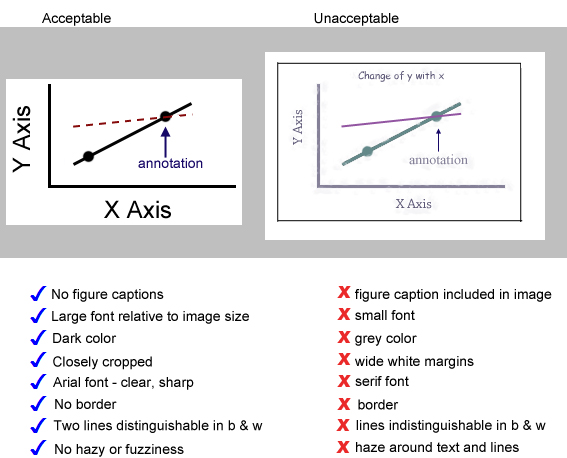Submissions
Online Submissions
To learn more about our submission process and other frequently asked questions, see below.
Already have a Username/Password?
Need a Username/Password?
Registration and login are required to submit items online and to check the status of current submissions.

New Submission Process
To save time for everyone, the initial submission of your manuscript no longer needs to be formatted to any particular style. Later, If your paper is accepted, you will be asked to upload a version that meets our journal’s specifications and formatting requirements.
After answering some questions about your paper, simply upload a double-spaced, line-numbered, anonymized pdf of your paper. The PDF will be sent directly to reviewers. Therefore, to ensure blind peer review, it is important that your names are not included in the PDF.
(Note: re-submissions of manuscripts follow the procedures of the initial submission. If your initial submission required rich-text format files, those files will also be needed for re-submission.)
Initial Submission Guidelines
First, please ensure email from @ecologyandsociety.org is not blocked by your email service provider and that the domain is marked as “not spam” in your email client. We must be able to communicate with you.
You will be guided through the initial submission process.
- Step 1. Answer the questions provided.
- Step 2. Enter authors’ names and details.
- Step 3. Enter title, abstract, keywords, and acknowledgments details
- Step 4. Upload a double-spaced, anonymized, and line-numbered pdf of your manuscript (include graphs, tables, equations. . .everything).
- Step 5. Confirm and finalize your submission.
If you have any difficulties with this process, contact the managing editor by email managing_editor@ecologyandsociety.org.
Old Submission Procedures and Post-Acceptance Guidelines for New, PDF-Only Submissions
The old submission process is broken into the following six steps. For the new, pdf-only submission process, some of these steps will be completed post acceptance. Detailed instructions for each step can be found on the submission pages.
- Step 1: Specify the manuscript type, complete the checklist, enter your “Data and Code Availability Statement,” submit a covering letter, and if necessary, assign your manuscript to a Special Feature.
- Step 2: Specify the author’s information.
- Authors must be individuals, not groups or corporations
- Author’s names and affiliations will appear in the published paper the way you enter them. Please take the time to ensure your coauthors’ names and affiliations are correct.
- Affiliations may include department, institution, city, and/or country. None are required.
- Enter mail or street addresses in the contact information box. Addresses are not required.
- Step 3: Enter the Title, Abstract, Keywords/phrases, and Acknowledgments.
- All must be text only.
- Step 4: Upload the body of the manuscript – Text only, as .rtf file – From “Introduction” through to the end of the “Literature Cited”.
- Title, abstract, keywords, and acknowledgments are already entered. Please do not duplicate.
- Figures, tables, appendices, equations, and all other attachments will be uploaded in Step 5.
- Step 5: Specify the list of attachments and upload those attachments (tables, figures, equations, appendices)
- Step 6: Final verification of the manuscript
Note: The author interface for each of these steps includes details on how to enter the information required.
1. Organizing your submission (only after your paper has been accepted for publication)
To submit, please separate your manuscript and save as the following file types:
- body – from Introduction to end of Literature Cited – (rich-text format)
- tables (each table is an individual file, in rich-text format)
- figures (each figure is an individual image file: GIF, PNG, or JPG)
- equations (each equation is an individual image file: GIF, PNG, or JPG — GIF is best for equations)
- appendices (pdf for text, tables, and figures; other file types are accepted for online resources, models, spreadsheets, etc.)
2. Title, Abstract, Keywords/phrases, and Acknowledgments
(Step 3 of the submission process)
Type (or cut and paste) directly into the submission interface
Do not include in the body of your manuscript
Title e.g., “Resilience in urban and rural Mexican small-scale fisheries“
Only the first word and proper nouns should be capitalized
Everything else should be lowercase
Avoid abbreviations
Abstracts
Abstracts should usually be less than 300 words.
They should not contain citations.
Avoid abbreviations – if used they must be first spelled out.
Keywords/phrases
list alphabetically
separate with a semicolon.
Acknowledgments
Type (or copy and paste) directly
3. Body of the manuscript (from Introduction through to the end of Literature Cited)
Note: Figures or tables in the body of the manuscript will generate errors during the submission procedure.
- Headings and subheadings
- Equations, Greek symbols, and statistics
- Text Boxes
- Details of style
- Literature cited
Headings and subheadings must appear on a line by themselves
Main headings:
- Standard headings should be used preferentially (if appropriate)
- INTRODUCTION, METHODS, RESULTS, DISCUSSION, CONCLUSION, LITERATURE CITED
- Other headings are permissible
- Use LITERATURE CITED (not Bibliography, References, nor anything else)
- centered on a line by themselves
Secondary headings
- left-justified on a line by themselves
- bolded
- lowercase except for the initial letter of the first word
- e.g., General characteristics of movement
Tertiary headings
- left-justified on a line by themselves
- italicized
- lowercase except for the initial letter of the first word
- e.g., Field study and simulation model
Equations
The process of inserting equations occurs in both Steps 4 and 5.
- First, you must indicate where in the manuscript you want the equations (Step 4)
- Next, you must upload the image of the equation (Step 5).
To designate the location of each equation: Insert tags <eqn#> into the text of your manuscript where the equation should appear,
where # = 1,2,3,…,n indicates the sequential number of the equation.
During Step 5, you will be prompted to upload images of your equation(s).
Upload each equation as a separate graphic file named eqn#.gif, where # corresponds to the tags inserted into the body of the manuscript.
Any one equation may be specified any number of times by inserting the appropriate tag in the manuscript in multiple locations.
Text Boxes
To set content apart in a Text Box, place <txt#> at the beginning and </txt#> at the end of the content (where # = 1, 2, 3… is the appropriate box number). Put into the body of the manuscript in the approximate desired location.
- include author plus year of publishing, (Smith 2000)
- separate two references with a comma, (Smith 2000, Green 2002)
- list oldest reference first, (Smith 2000, Green 2002, Brown 2012)
- if two authors give both names, if three authors use ‘et al.’, (Smith and Brown 2000, Smith et al. 2012)
- the same author in two different years- name the author only once (Smith 2000, 2012, Brown 2013)
- the same author in the same year, designate with letters (Smith 2000a)
- direct quotes should include the date followed by page number (Smith 2000:197)
- second-hand references (Smith 2000, as cited in Brown 2005)
Note: Smith 2000 should not appear in Lit. Cited section.
Spacing and Fonts
Single-space all material.
Separate paragraphs with a blank line.
Use a 12-point font (preferably Times Roman).
Italicize scientific names and symbols for all variables and constants except Greek letters in the text.
Symbols in illustrations should be italic to match the text.
Italics should NOT be used for emphasis.
Do not underline text.
For common names of birds, follow the Ornithological Societies of North America style (AOU checklist), with initial capital letters: Black-throated Green Warbler. For all non-avian taxa, use lowercase for common names.
Avoid footnotes in the body of the manuscript; most footnote material can be incorporated into the text for the benefit of readers and editors.
Footnotes below tables are acceptable; instead of numbers, please use (in order): †, ‡, §, |, ¶, #, ††, ‡‡, §§, ||, ¶¶, ##.
Use the International System of Units (Systeme Internationale: SI) for measurements. Consult Standard Practice for Use of the International System of Units (ASTM Standard E-380-93) for guidance on unit conversions, style, and usage. When preparing text and figures, note in particular that,
- SI requires the use of the terms mass or force rather than weight;
- use the solidus (/); for two or more units in a denominator, use negative exponents; and
- use a capital L as the symbol for liter.
Statistics
Use leading zeroes with all numbers <1, including probability values (e.g., P < 0.001). For every significant F statistic reported, provide two df values (numerator and denominator). Whenever possible, indicate the year and version number of the statistical software used.
Authors may include links to other Internet resources in their article [e.g., the Breeding Bird Survey (http://www.mbr-pwrc.usgs.gov/bbs/bbs.html)]. When inserting a reference to a webpage, please include the http:// portion of the address.
- The Council of Science Editors (CSE) Style Guide, is recommended for details of style.
- Manuscripts are currently accepted in English only.
- Write with precision, clarity, and economy:
use the active voice and first-person whenever appropriate. - Use American spellings (e.g., behavior, not behavior) except when quoting or in citations.
Literature cited – NEW – do not include italics anywhere in referencing or literature cited. In general, use Harvard Referencing System.
- Each citation in the text must be included in the Literature Cited section.
- Every reference in the Literature Cited must be referred to in the text.
- The list should conform in sequencing and punctuation to that found in recent issues of Ecology and Society.
Citing Ecology and Society:

Example Journal Citation:

- All journal titles should be spelled out completely (i.e., do not abbreviate journal titles).
- In the titles of articles, the spellings of all words should agree with that used in the original publication.
- Provide the publisher’s name and location when you cite symposia or conference proceedings; distinguish between the conference date and the publication date if both are given.
- Do not list abstracts or unpublished material in the Literature Cited. They may be listed in the text as personal observations (by an author of the present paper), personal communications (from others), or unpublished x, where x = data, manuscript, or report;
- Provide authors’ names and initials for all unpublished data, manuscripts, and reports in the text of the paper.
- Links to online, freely available articles are permitted. Please use the following format:
http://CRAN.R-project.org/package=lme4 - Do not include links to password-protected websites or an author’s website. Exceptions to this rule include links to Birds of North America species accounts and links to authors’ websites that post a software program that is not available by any other means and is integral to the paper.
- Insert spaces between author’s initials.
- Last name appears first for first author; initial(s) first for subsequent authors.
- Books and conference proceedings must include publisher information: name, city, state or province (if pertinent), and country.
- Conference proceedings must include the city, state/province, country, and year in which the conference was held. Conference dates are typically included, although not required. The editor(s) of the Proceedings should be included, if possible.
- Journal articles in press should include the volume number of the journal even if the page range is not known.
4. Attachments (tables, figs, etc.)
All tables, figures, appendices, videos, computer simulations, and databases constitute attachments to the body of the manuscript. As such, they must be submitted as separate files. During the submission process you will be required to select your attachment type from a drop-down list, and then type or paste its associated caption – these steps are repeated until you have input the captions for all of your attachments. You will then upload the attachment files, and our software will generate a web page for each attachment based on the file names and captions provided. Do not include captions or titles in the attachment files themselves.
Please see the Equations section below for information on how to format equations.
Tables (saved as .rtf files)
- The table’s caption is entered separately and should not appear in the table.
- Single spaced
- Row and column entries are separated by cell divisions using the table function in the word processing software.
(That is, tabs, spaces, or blank lines to separate information will not work.) - No horizontal or vertical lines (borders) to separate cells
- No images within tables
- No color
- Use regular font in column and row headings (no bold or italics)
- Do not merge rows, merging across columns is okay
- No bulleted or numbered lists
- Asterisks are reserved to denote levels of significance, not for footnotes
- Superscripted numbers may be used to identify citations within a table
- The footnote symbols should be in the order: †, ‡, §, |, ¶ , #, and then doubled symbols. (See CSE Style Manual).
- Do not include information in tables that is not discussed in the text of the manuscript.
Example Tables:

- Figures are added during Step 5 of the submission process.
- Ensure all text in a figure is legible on paper when the image is printed 7.5 cm wide.
- Figures must be clear and sharp.
- Use imaging software (Excel does not export graphs well).
- Figures must be in .GIF, .PNG, or .JPG formats.
- For photos or images with gradients of color use JPG.
- For images with flat colors use GIF or PNG8.
- up to 300 ppi and no wider than 2000 pixels (unless given explicit permission by the managing editor).
- the image will be printed 7.5 cm wide (complex figures may be printed at 16cm) – text should be legible, clear, and sharp at that size. Print your figure at 7.5 cm; is it legible, clear, and sharp?
- We may ask you to supply high-resolution, print-quality versions of your figures.
- Font must be large, legible, and sans serif; Arial font is best.
- Use a white background
- No title or caption information in the figure. That information is entered elsewhere.
- Initial upper case letters are preferred except where SI requires lower case letters for unit abbreviations (e.g., dbh, ln).
- No border around your figures
- Color figures are encouraged. Please verify they will print well in black-and-white (and that color selection would be distinguishable to people who are red-green color-blind).
- Use shaded or hatched bars in preference to color or black ones.
- Use italic lettering for single-letter variables, constants, and scientific names in illustrations to make them consistent with the text.
- Use bar graphs in preference to pie charts
Example Figures:

Appendices are not copy-edited nor formatted prior to publication so authors must ensure that their appendix is formatted correctly and references to appendices in the body of the manuscript are clear.
Appendices containing text, tables, and/or figures must be uploaded as PDFs, and formatted according to the journal’s style.
The top margin of the appendix must be 4 cm.
Enter all title and caption information when asked during the submission process, and upload each appendix as a separate file.
All nontext appendices, such as databases, video, or sound files may be uploaded using an appropriate file type for the file contents. Appendices should be labeled logically to indicate content (i.e. “Program#.filetype”, “Sound#.filetype”). Captions should describe the attachment fully (by content, file format, usage, software required to run them, etc.) and are uploaded separately during the submission process.
Data and Code Archive
Ecology and Society invites authors to make available all relevant data and code underlying the findings described in your manuscript available.
Data can be qualitative or quantitative, collected via physical measurements, surveys, interviews, observations, or other forms of data collection. When we ask for data availability, we do not refer to raw data, but data that is anonymized to protect study participants.
Code refers to computer code of computer models as well as scripts for (statistical) data analysis. The reason for this is to improve the quality of the manuscripts and facilitate the increasing requests from research funders to share and archive research data and code. As part of the submission of the manuscript, the data and code must be made available to editors and peer reviewers for the purposes of evaluating the manuscript by providing a code and data availability statement. Upon acceptance of the paper and as part of the publication, the authors provide a data and code availability statement, which specifies that the data and code are deposited publicly and lists the name(s) of archives along with digital object identifiers or URLs for the relevant deposits.
Human subjects: With respect to data from human subjects, we ask that you forward only information that was approved by the institutional ethics review committee that approved the research study. We also ask you to provide information identifying the institutional approval for the human subjects research.
Examples of recommended public archives include Open Science Framework, Dryad, Zenodo, Figshare, and CoMSES.
Below, find templates you can use as a starting point for your statement. Note that the statement will be published with the article.
| Availability of data and/or code | Template for data and code availability statement |
|---|---|
| Data/code openly available in a public repository that issues datasets with DOIs | The data and code that support the findings of this study are openly available in [repository name e.g., “figshare”] at https://doi.org/[doi], reference number [reference number]. Ethical approval for this research study was granted by [organization and approval number]. |
| Data/code openly available in a public repository that does not issue DOIs | The data and code that support the findings of this study are openly available in [repository name] at [URL], reference number [reference number]. Ethical approval for this research study was granted by [organization and approval number]. |
| Data/code derived from public domain resources | The data and code that support the findings of this study are available in [repository name] at [URL/DOI], reference number [reference number]. These data and code were derived from the following resources available in the public domain: [list resources and URLs] |
| Data/code available on request because of privacy/ethical restrictions | The data and code that support the findings of this study are available on request from the corresponding author, [initials]. None of the data and code are publicly available because of [restrictions e.g., they contain information that could compromise the privacy of research participants]. Ethical approval for this research study was granted by [organization and approval number]. (Provide an explanation in the letter to the editors). |
| Data/code sharing not applicable | Data/code sharing is not applicable to this article because no data and code were analyzed in this study. |
All items required
- This work has not been published elsewhere, nor is it being considered for publication by another journal. If either of these conditions apply, provide complete details in a cover letter (below) to the editors. Failure to notify the editors is grounds for rejection.
- I understand that Resilience Alliance is not for profit and charges a publication fee to cover costs. The base fee is $975/manuscript.
*Authors submitting to a Special Feature may have their fees covered by a separate funding source. Please make sure you know whether your fees are covered.
Waivers may be given but must be granted before submission. (see waiver policy) - I understand that a manuscript longer than 5000 words will be subject to additional charges.
- The use of figures and tables that have been published elsewhere is strongly discouraged. If the use of such material simply cannot be avoided, the author MUST
- declare in a cover letter that such material is submitted
- receive written permission from the original publisher to use the materials in perpetuity (that is, without any time limit). You must submit the completed form after your article is accepted for publication.
- The text follows the formatting requirements outlined in the Author Guidelines.
- The text of the paper and tables are in Rich Text Format (RTF). The body of the manuscript has no embedded figures, equations, or tables.
- Equations and figures, if present, are correctly referenced in the body of the paper. (Have individual image files of the equations and figures ready for upload.)
- I have checked with my coauthors about their names and affiliations. I understand that they will not be changed after publication.
- If the work involves human subjects, the author certifies that the work was done with prior approval for human subjects research by an institutional review board (IRB) or equivalent ethics committee(s). The author certifies that the work followed ethical practices designated by either an IRB or ethics committee. If requested from the journal, the author will present documentation from the review board or ethics committee confirming approval of the research. Otherwise, the author certifies that the work did not involve human subjects.
Permission to Use Copyright Protected Material
If, in your submission, you include any material created or published by someone else you must get permission from the copyright holder. Most publishers have their own forms. Once you have received permission from the copyright holder please send a copy to jrnls@resalliance.org (include your manuscript number in the subject line). If there is a fee involved please also send a copy of your receipt as proof of payment.
If the copyright holder does not have their own permission forms please download and complete this form, have the copyright owner sign it, and return it to us.
Consent and Release for Use of Likeness
If you must include images of recognizable people a Consent and Release for Use of Likeness is required (form). Send a copy of the signed agreement to jrnls@resalliance.org.
